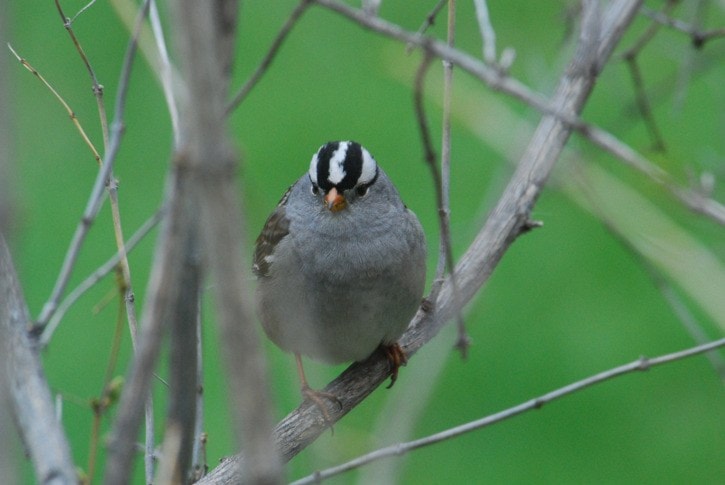During the last couple of weeks, a large number of White-crowned Sparrows have been moving through Southern B.C. The winter range for this species covers most of the United States with a few stragglers remaining in southern Canada.
The breeding range is across the Arctic and sub-Arctic regions of Canada and Alaska, and the mountainous parts of B.C. In interior B.C., their breeding range is primarily restricted to the alpine regions of the higher mountains.
This is a habitat that closely resembles the Arctic tundra. I often encounter White-crowned Sparrows around Nakusp when I visit higher elevations. They occur on Idaho Peak, on Saddle Mountain and anywhere else that provides alpine and sub-alpine meadows.
Like most sparrows, their primary food source is insects and seeds. At the moment, 30 to 40 of them are feeding on the seeds that I spread on my driveway each morning.
Such flocks are not unusual around Nakusp. In a typical year they start appearing during the last week of April, and 10-14 days later there won’t be any left. Flocks can number anywhere from just a few to a hundred or more. It is likely that these early migrants are heading to northern Canada, and are not the ones that will eventually breed in the local mountains. Breeding in the alpine won’t begin for several more weeks, but the migrants passing through now will be long gone by then.
White-crowned Sparrows are ground nesters. Nests are built of grasses, roots, stems and shredded bark with a lining of softer material, and are usually located under a small shrub of sapling.
Like many small songbirds, these sparrows often have two broods each season. This is more difficult in harsh climates such as those in the Arctic or in alpine habitats. To maximise the time available for breeding, the male assumes responsibility for raising the first brood a few days after they hatch. This allows the female to incubate a second clutch.
Another species put in a fairly spectacular appearance last week. On April 27, the days after the cold and rain swept through the region, a flock of over 400 Bonaparte’s Gulls appeared on the Nakusp waterfront. It is quite likely that good numbers of this small gull use this valley as a migration route annually, but I don’t see them every year – and rarely in such numbers. Cold fronts are known to interrupt migration, and large numbers of birds are often forced down in such conditions.
Bonaparte’s Gulls are much smaller than the more familiar California Gull that we see in large numbers in the fall. They are also quite different in appearance; at this time of year Bonaparte’s have a solid black head. Like the White-crowned Sparrows, these gulls are headed to more northerly breeding grounds.
